Navigation article:
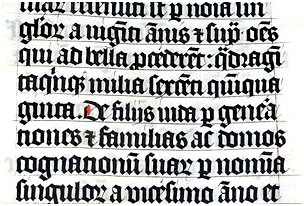
Calligraphy (in the Greek meaning κάλλος kallos "beauty" + γραφή graphẽ "writing") is a kind of ornamental handwriting present in various cultures around the world and whose origins go as far back to ancient occasions. A modern day meaning of calligraphic practice could be: "the skill of giving form to signs within an significant, harmonious and skilled manner." [1]
Calligraphic works vary from functional inscriptions and hands lettering to art work pieces in which the artistic manifestation might take priority within the legibility from the letters. Well-crafted calligraphy is different from typography and non-classical hands-lettering for the reason that figures are disciplined yet fluid and spontaneous. Frequently they're improvised right now of writing.
Calligraphy has performed a substantial role within the good reputation for many cultures as well as their languages. Muslims were among individuals who valued calligraphy not just as art but additionally tried on the extender because the ultimate expression of God’s words. [2] Ancient and holy books of numerous religions happen to be handwritten in illuminated calligraphic script. In present occasions, calligraphy is constantly on the flourish by means of wedding and event invitations, typography, original hands-lettered emblem design, commissioned calligraphic art, maps, along with other works involving writing.
Last century calligraphy master, Edward Johnston, best described the entire process of writing calligraphy as he advised: "All rules must cave in to Truth and Freedom." [3]
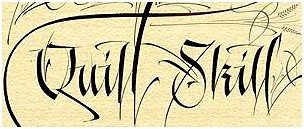
East Asian calligraphy
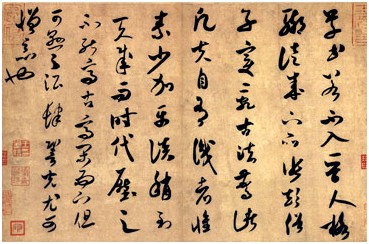
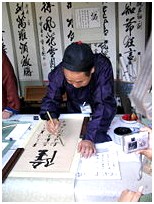
Calligraphy is recognized as an essential art in East Asia and because the most refined type of East Asian painting. It's influenced most major art styles, including 'sumi-e', a method of Chinese and Japanese ink and wash painting which utilizes similar techniques and tools and it is based positioned on calligraphy.
East Asian calligraphy typically uses ink brushes to create Chinese figures that are known as by various names: 'Hanzi' in Chinese, 'Kanji' in Japanese, and 'Hanja' in Korean and Hán Tự in Vietnamese. The word calligraphy: in Chinese, Shufa 書法, in Japanese Shodō 書道 , in Korean, Seoye 書藝, all mean 'the method of writing'.
Indian Calligraphy
Persian and Arabic script is believed to possess influenced Indian calligraphy, even though the scripts used are somewhat different. The flowing Persian script was considered to have influenced the way of writing of Indian epics. Calligraphy in India was especially affected by Sikhism whose holy book continues to be typically handwritten and illuminated. In ancient occasions the possible lack of modern printing technology led to a wealthy heritage of calligraphy in lots of Indian languages.
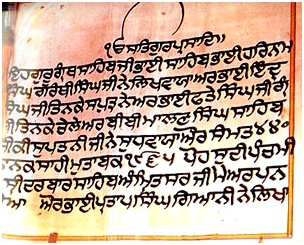
Nepalese calligraphy
Nepalese calligraphy has a big impact on Mahayana and Vajrayana Buddhism. Ranjana script may be the primary type of this calligraphy.
It's mainly employed for writing Nepal Bhasa but can also be utilized in monasteries asia, Tibet, shoreline China, Mongolia, and Japan. [5] In Mahayana and Vajrayana Buddhist traditions, it's famously accustomed to write various mantras such as the Om mane padme hum mantra of Aryawalokirteshwar, the Mantra of Arya Tara Om tare tuttare ture svaha, and also the mantra of Manjushree Om ara pa cana dhi. The script can also be utilized in Hindu scriptures.
In Tibet, the script is known as Lantsa and accustomed to write the initial texts of Sanskrit.
Tibetan Calligraphy
Calligraphy is central to Tibetan culture. The script comes from Indic scripts. As with China, the nobles of Tibet, like the High Lamas and oracles from the Potala Palace, were usually skilled calligraphers. For many centuries, Tibet is a center of Buddhism, a faith that places a lot of significance around the written word. Just about all high religious writing involved calligraphy, including letters sent through the Dalai Lama along with other religious, and secular, figures of authority. Calligraphy is especially apparent on their own prayer wheels, even though this calligraphy was forged instead of scribed, similar to Arab and Roman calligraphy is frequently available on structures. Although initially completed with a brush, Tibetan calligraphers are now using chisel tipped pens and markers.
Persian calligraphy
Good reputation for Persian Calligraphy
A brief history of calligraphy in Persia goes back towards the pre-Islam era. In Zoroastrianism, beautiful and obvious writings were sought after. [6] The 3 primary types of Persian calligraphy are known as: Nasta'liq script, Shekasteh-Nasta'liq script and Naghashi-khat script. “Nasta'liq” is easily the most popular contemporary style among classical Persian calligraphy scripts and Persian calligraphers refer to it as the “Bride from the Calligraphy Scripts.” This calligraphy style continues to be according to rigid structure which has altered hardly any through the years.
It's thought that ancient Persian script was introduced by about 500-600 B.C.E. to supply monument inscriptions for that Achaemenid nobleman. These scripts contained horizontal, vertical, and diagonal nail-shape letters—the reason it's known as “Script of Nails” (Khat-e-Mikhi) in Farsi. Centuries later, other scripts for example “Pahlavi” and “Avestaee” scripts grew to become famous ancient Persia. Following the rise of Islam within the seventh century, Persians adapted the Arabic alphabet to Farsi language and developed the contemporary Farsi alphabet.
Islamic calligraphy
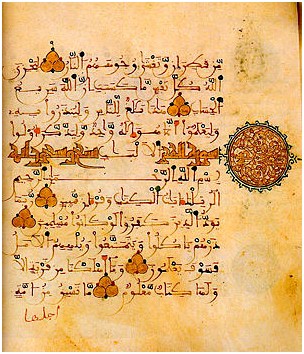
Islamic calligraphy is definitely an facet of Islamic art which has evolved plus the religion of Islam and also the Arabic language.
Arabic and Persian calligraphy are generally connected with geometric Islamic art (referred to as arabesque) that is located on the ceilings and walls of mosques and also on paper. Contemporary artists within the Islamic world use their calligraphic heritage by utilizing inscriptions or abstractions within their work.
Calligraphy has perhaps end up being the most venerated type of Islamic art because it possesses a outcomes of the languages from the Muslims using the religion of Islam. The holy book of Islam, al-Qur'an has performed a huge role within the development and evolution from the Arabic language, by extension, calligraphy within the Arabic alphabet. Proverbs and finish passages in the Qur'an continue to be sources for Islamic calligraphy.
Islamic Calligraphy continues to be an talent especially valued by Muslims who typically thought that only Allah could create pictures of people and creatures which figures of these shouldn't be symbolized in artwork. [7]
There's existed a powerful parallel tradition to that particular from the Islamic, among Aramaic and Hebrew language scholars, observed in such works because the Hebrew highlighted bibles from the ninth and tenth centuries.
Western calligraphy
Western calligraphy may be the calligraphy from the Latin writing system, and also to a smaller degree the Greek and Cyrillic writing systems. Throughout the Dark Ages, thousands and thousands of manuscripts were created: many were illuminated with gold and fine painting. [8]
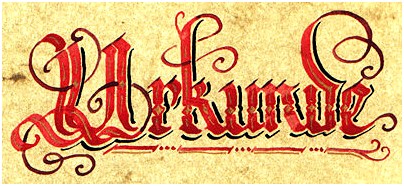
Christian places of worship promoted the introduction of writing with the prolific copying from the Bible, specially the New Testament along with other sacred texts. [9] Priests within the Uk adapted the late Roman bookhand, 'Uncial', to build up a distinctive bookhand known as "Celtic" or "Insular," meaning "the hawaiian islands." The seventh to ninth centuries in northern Europe were the height here we are at Celtic illuminated manuscripts, exemplified through the 'Lindisfarne Gospels' and also the 'Book of Kells'.
Charlemagne helped multiplication of lovely writing by getting Alcuin, the Abbot of You are able to, to his capital of Aachen. Alcuin began a significant revision of types of script and all sorts of texts, creating a new bookhand named after his patron Charlemagne.
Blackletter (also referred to as Medieval) and it is variation Rotunda, progressively developed in the Carolingian hands throughout the twelfth century. Within the next three centuries, the scribes in northern Europe used an extremely compressed and spiky type of Medieval. Individuals in Italia and The country preferred the rounder but nonetheless heavy-searching Rotunda. Throughout the fifteenth century, Italian scribes came back towards the Roman and Carolingian types of writing and designed the Italic hands, also known as Chancery cursive, and Roman bookhand. These 3 hands—Medieval, Italic, and Roman bookhand—became the models for printed letters. Johannes Gutenberg used Medieval to print his famous Bible, however the lighter-weight Italic and Roman bookhand have since end up being the standard.
Resurgence of Western Calligraphy
Hands-written and hands-decorated books largely stopped being created by about 1510, after printing grew to become ubiquitous. [9] However, in the finish from the nineteenth century, William Morris and also the Crafts and arts Movement redefined, elevated, and popularized British broad-pen calligraphy. Morris influenced many calligraphers, including Englishmen Edward Johnston and Eric Gill. [10] Edward Johnston developed their own broad-edged hands after studying tenth-century manuscripts.
Johnston, author of Writing, Illuminating & Lettering (1906) initially trained his students an uncial hands utilizing a flat pen position, but later altered to teaching students his “foundational hand” utilizing a slanted pen position. He first known this hands as “Foundational Hand” in the 1909 publication, Manuscript & Inscription Letters: For schools and classes but for the utilization of craftsmen. [11]
Copperplate
Copperplate is really a type of calligraphic writing written having a sharp pointed nib rather from the broad-edged nib utilized in most calligraphic writing. The name originates from the sharp lines from the way of writing resembling the etches of engraved copper. The Copperplate typeface tries to emulate copper-engraved letters.
Copperplate obtains its name in the copybooks from the eighteenth and nineteenth centuries, that have been produced through the engraving of copper printing plates utilizing a transferred ink original. Students labored diligently to repeat these works, although a precise replica could not be acquired, since the works were produced initially in the chiseling of copper plates.
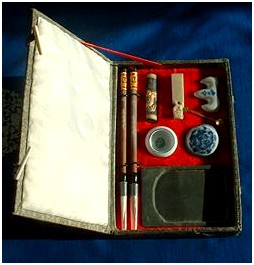
The main tools for any calligrapher would be the pen, which can be flat- or round-nibbed and also the brush. For several decorative purposes, multi-nibbed pens—steel brushes—can be utilized. However, works are also created using felt-tip pen and ballpoint pens, although these works don't employ angled lines. Ink for writing is generally water-based and far less viscous compared to oil based inks utilized in printing. Top quality paper, that has good porousness, will enable cleaner lines, although parchment or vellum is frequently used, like a knife may be used to erase play with them along with a lamp isn't required to allow lines to feed it. Additionally, light boxes and templates are frequently used to have straight lines without pencil markings detracting in the work. Lined paper, because of an easy box or direct use, is most frequently lined every 3 months or 1 / 2 inch, although inch spaces are from time to time used, for example with litterea unciales, and college ruled paper functions like a guideline frequently too.
Calligraphy Today
Calligraphy remains used today in graphics, emblem design, maps, menus, handmade cards, invitations, legal documents, diplomas, poetry, business card printing and hand crafted presentations. Many calligraphers find their "bread and butter" operate in the addressing of calligraphic envelopes and invitations for weddings and enormous parties. Digital era has facilitated the creation and distribution of recent and in the past related fonts thousands have reached use. Calligraphy itself gives unique expression to each individual letterform, difficult with typeface technologies regardless of their sophistication. [12]
The calligraphic art is not nearly literal reproduction of historic and non secular text. Written forms have grown to be more abstract and therefore are integrated into works that have just as much resonance with contemporary painting because they use ancient manuscript writing.
In 1998 British calligrapher Jesse Jackson was commissioned, by Saint John's College to hands illuminate the St. John's Bible, a task which required him 5 years to accomplish. At various stages of completion books in the Bible result displayed in the Minneapolis Art Institute, as well as in 2006 Illuminating the term, the nation's touring exhibition from the Saint John’s Bible, opened up in the Library of Congress in Washington, D.C. [13]
- ↑ Claude Mediavilla, Alan Marshall, Mark Van Stone, Gerard Xuriguera, and Jesse Jackson, Calligraphy: From Calligraphy to Abstract Painting. (Wommelgem, Belgium: Scirpus Publications, 1996, ISBN 9080332518), 18.
- ↑Islamic CalligraphyIslamicarchitecture.org. Retrieved May 19, 2008.
- ↑ Edward Johnston, Writing & Illuminating, & Lettering (London: Pitman, 1977, ISBN 0273010646).
- ↑Calligraphy by Denis BrownQuillskill.com. Retrieved May 23, 2008.
- ↑Nepal Lipi – The Nepalese ScriptsJwajalapa.com. Retrieved May 19, 2008.
- ↑Persian AlphabetStanford.edu. Retrieved May 19, 2008.
- ↑Islamic Figurative Art and Depictions of MuhammadReligionfacts.com. Retrieved May 19, 2008.
- ↑ Christopher De Hamel, Past Illuminated Manuscripts (London: Phaidon Press, 1994, ISBN 0714829498).
- ↑ 9.09.1 Christopher De Hamel, It: Past the Bible (London: Phaidon, 2001, ISBN 0714837741).
- ↑ S. Cockerell (1945), from "Tributes to Edward Johnston" in H. Child and J. Howes, (eds.), Training in Formal Writing (1986), 21-30.
- ↑ Edward Johnston, Manuscript & Inscription Letters: For Schools & Classes & for using Craftsmen (London: Mister Isaac Pitman & Sons, 1928, OCLC: 16851305), plate 6.
- ↑ George Thomson, Digital Calligraphy with Illustrator (Cambridge, Mass: Course Technology, 2004, ISBN 1592004989).
- ↑The Saint John's BibleSaintjohnsbible.org. Retrieved May 19, 2008.
References
- Anderson, Jesse M. The skill of Written Forms The Idea and exercise of Calligraphy. New You are able to: Holt, Rinehart and Winston, 1969. ISBN 0030686253
- Cinamon, Gerald. Rudolf Koch: Letterer, Type Designer, Teacher. New Castle, Del: Oak Knoll Press, 2000. ISBN 1584560134
- De Hamel, Christopher. It: Past the Bible London: Phaidon, 2001. ISBN 0714837741
- De Hamel, Christopher. Past Illuminated Manuscripts. London: Phaidon Press, 1994. ISBN 0714829498
- Cennini, Cennino, and Christiania Jane Powell Herringham. It of the skill of Cennino Cennini: A Modern Day Practical Treatise on Quattrocento Painting. London: G. Allen & Unwin, limited, 1899. OCLC 6441291
- Hewitt, Graily. Lettering for college students & Craftsmen. New You are able to: Taplinger Pub. Co, 1981. ISBN 0800847288
- Jackson, Jesse. The Storyline of Writing. New You are able to, N.Y.: Taplinger Pub. Co, 1981. ISBN 0800801725
- Johnston, Edward. Writing & Illuminating, & Lettering. London: Pitman, 1977. ISBN 0273010646
- Lovett, Patricia. Calligraphy & Illumination: A Brief History and Practical Guide. New You are able to: Harry N. Abrams, 2000. ISBN 0810941198
- Neugebauer, Friedrich. The Mystic Art of Written Forms: An Highlighted Guide of Lettering. Salzburg: Neugebauer Press, 1980. ISBN 0907234003
- Thomson, George. Digital Calligraphy with Illustrator. Cambridge, Mass: Course Technology, 2004. ISBN 1592004989
- Zapf, Hermann, Gudrun Zapf von Hesse, and John Prestianni. Calligraphic Type Design within the Digital Age: An Exhibit in Recognition from the Contributions of Hermann and Gudrun Zapf: Selected Type Designs and Calligraphy by 16 Designers. Corte Madera, CA: Gingko Press, 2001. ISBN 1584230967
Exterior links
All links retrieved The month of january 5, 2017.
" New World " Encyclopedia authors and editors rewrote and completed the Wikipedia article in compliance with " New World " Encyclopedia standards. This short article abides by the Creative Commons CC-by-sa 3. License (CC-by-sa), which can be used and disseminated with proper attribution. Credit arrives underneath the relation to this license that may reference both " New World " Encyclopedia contributors and also the non selfish volunteer contributors from the Wikimedia Foundation. To cite this short article get more information at a summary of acceptable citing formats.A brief history of earlier contributions by wikipedians is obtainable to researchers here:
A brief history want to know , because it was imported to " New World " Encyclopedia:
Source: www.newworldencyclopedia.org